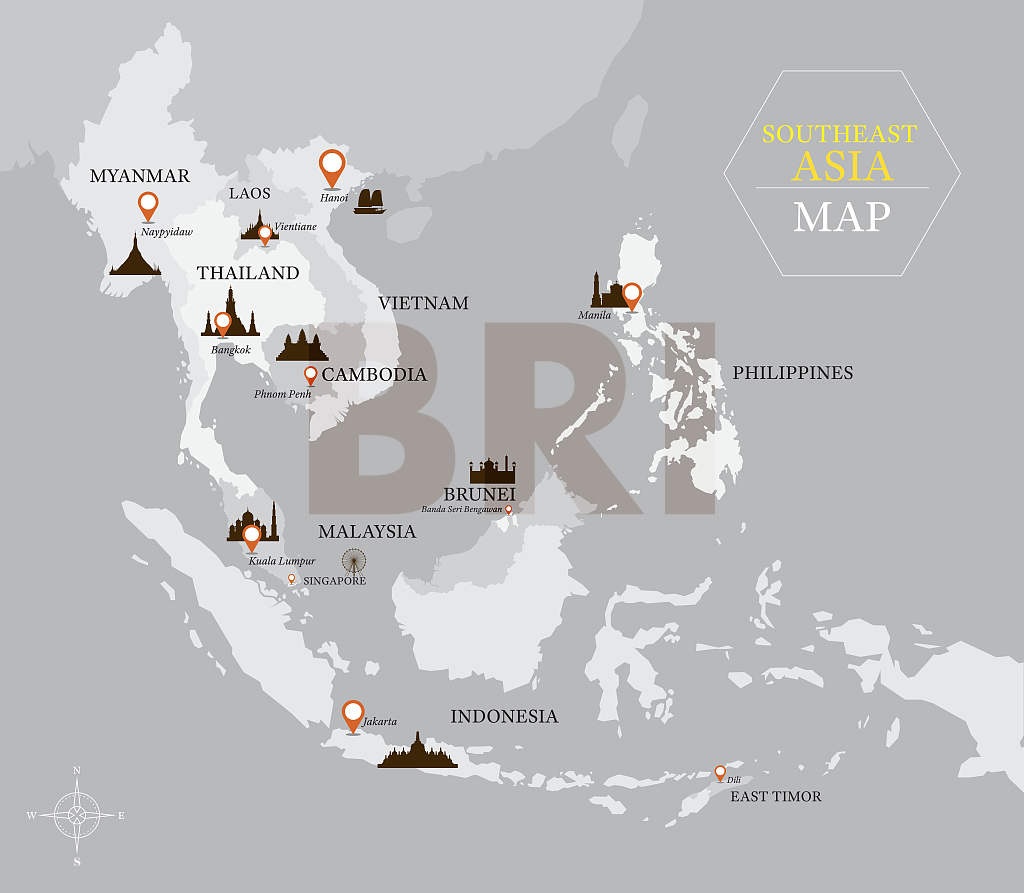
Opinion
13:13, 06-Apr-2019
Southeast Asian Chinese could play a fundamental role in BRI
Feng Da Hsuan

Editor's note: Feng Da Hsuan is an honorary dean at Hainan University Institute of Belt and Road Research Center and chief advisor of China Silk Road iValley Research Institute. The article reflects the authors' opinion, and not necessarily the views of CGTN.
The aim of the Belt and Road Initiative (BRI) is to "move outward." Because of geographical and cultural proximity, one of the key regions in the world for the BRI is Southeast Asia. Among all the good reasons why this is so, one which stood out is that in this region one can find nearly one and a half centuries of profound, ubiquitous and deep footprints of favorite sons and daughters from three Chinese provinces: Fujian, Guangdong and Hainan.
With this as the underpinning, the success of the BRI in the region may very well depend on how the Chinese in the region can be properly motivated.
Of course, as a result of more than a century and a half of development, Southeast Asian Chinese have developed their unique characteristics. For the BRI to engage them as partners, an important prerequisite is to comprehensively understand the Chinese state of being in Southeast Asia nations.
In the 19th century, due to the severe hardship in Guangdong and Fujian provinces, millions of Chinese made the arduous migration to Southeast Asia, especially to Thailand, Malaysia, Singapore (then part of the Malaysia British colony) and Indonesia. To make ends meet, these "pioneers" took up whatever jobs they could find to sustain their livelihoods. For example, many of the first Chinese migrants in Malaysia worked in very harsh conditions as laborers cutting juices on rubber plantations.

A commercial firm owned by Chinese immigrants in Surabaya, Indonesia in the 1920s. /VCG Photo
A commercial firm owned by Chinese immigrants in Surabaya, Indonesia in the 1920s. /VCG Photo
As time went by, through hard work and having inherent entrepreneurial talents, many were able to work their way up financially. Today, a significant number of them are the financial and intellectual pillars and to a certain extent political pillars of the nations in which they are residing.
In fact, in Malaysia, Thailand, Indonesia, Brunei and Singapore, the Chinese population, which occupies a significant percentage of the population, is well regarded in such nations.
Unquestionably, if the BRI interacts with such Chinese, the following cautions must be noted.
First, it must be fully recognized that for the Chinese in those nations, they only have a cultural link to China through their heritage. It would be a mistake for China to view them as Chinese per se. With this preamble, the loyalty of these Chinese to the nations they are residing in should be and is absolutely the front burner in their mindsets.
A significant number of them have become leading figures in finance and politics in those countries. In Singapore, although 70 percent of the population is Chinese, they should be regarded in reality as Singaporeans with profound Chinese heritage.
In Malaysia, the Finance Minister Lim Guan Eng must be recognized by all as a Malaysian Chinese, whose main portfolio is to ensure the wellbeing of Malaysian financial conditions. Ultimately, the principal aim of these Chinese would and should be to ensure that their country could benefit from the fact that they are loyal citizens.
Besides, having a profound loyalty to the countries they belong to should not and does not prevent them from having deep respect for the Chinese culture which they have inherited. For example, in Malaysia, there are some 60 high schools known as "independent schools" which are operated by the Chinese communities.
Although the students in such schools are primarily Chinese, students of other ethnicities are also welcome with open arms. In these schools, quite often one would find Malay and Tamil students. It is quite remarkable that the level of Chinese taught in such schools, in language and culture, is on par with those in China.
However, to guarantee that the students also have a profound understanding of Malaysia, the Malay and English languages are taught with equal intensity and depth. As a result, the students graduating from such schools are literally trilingual. This means that the Malaysian Chinese can be a natural bridge for the BRI to interact with the non-Chinese components of the Malaysia population.

Southeast Asia map with country and capital locations and BRI connections. /VCG Photo
Southeast Asia map with country and capital locations and BRI connections. /VCG Photo
Moreover, perhaps the most important aspect of the Southeast Asian Chinese is that they have merged in all dimensions seamlessly into the nations they are citizens of. In some of the countries, such as Thailand and Indonesia, many of the Chinese for whatever reasons have adopted Thai and Indonesian names.
This means just by examining their names, one would not know whether they have Chinese heritage or not. For example, the former president of the well-known Asia Institute of Technology, Professor Worsak Kanok-Nukulchai's Chinese name is Ke Yang-Du whose ancestors came from the Chaoshan region of Guangdong Province.
Like many Thai Chinese, while Professor Worsak is not fluent in Chinese, he possesses a naturally deep and palpable intellectual interest to promote within his capacity how Thailand can interact with China in order to achieve a win-win outcome.
At the moment, only a few universities in China, such as Jinan University in Guangzhou and Huaqiao University in Xiamen, engage in the research of the eco-system of Southeast Asian Chinese. As the social structures of the Chinese in Southeast Asia are highly complex and require in-depth studies, China should and must extensively engage in such research to understand their ways and means. After all, only through such understanding can the Southeast Asian Chinese become true and worthy BRI partners.
In the past five years, the BRI has moved rapidly in Southeast Asian nations, such as Malaysia. While there have been many successes, there were also quite a number of challenges, some of which are quite severe. Numerous articles have mentioned that the local Chinese should be the natural conduit for China to deal with such nations. While this is a reasonable assumption, it is important to understand the Chinese in Southeast Asia are not "one of us." Yes, they share a common Chinese heritage but their loyalty is to other nations.
(If you want to contribute and have specific expertise, please contact us at opinions@cgtn.com.)

SITEMAP
Copyright © 2018 CGTN. Beijing ICP prepared NO.16065310-3
Copyright © 2018 CGTN. Beijing ICP prepared NO.16065310-3